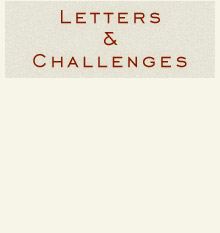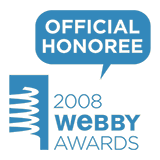Emdashes—Modern Times Between the Lines
The Basics:
About Emdashes | Email us
Ask the Librarians
Best of Emdashes: Hit Parade
A Web Comic: The Wavy Rule
Features & Columns:
Headline Shooter
On the Spot
Looked Into
Sempé Fi: Cover Art
Book Giveaway: Laura Jacobs's "The Bird Catcher"
Filed under: Letters & Challenges Tagged: birds, books, design, fiction, giveaways, Laura Jacobs

Martin Schneider writes:
Emdashes is delighted to be giving away a copy of The Bird Catcher, the brand-new novel by Vanity Fair contributing editor Laura Jacobs, who's also the author of the wonderful book Women About Town.
A true New York story, The Bird Catcher has received glowing notices in, among other publications, Booklist and Bookforum. That it's about real birds as well as swooping and cawing city life and the nests and claws of love can only add to its appeal around these parts; as longtime readers know, both Emily and I have a lively interest in our enviably multicolored and befeathered counterparts. We salute them as vigorously as all of us Emdashers salute quality contemporary fiction.
In addition to the giveaway, we're very pleased to present a lovely mini-essay from Jacobs herself on the subject of em dashes, below. My paying work is as a copy editor for academic publishers, so I'm fascinated by the interaction between authors and editors. I see one side of that dynamic, but always in a nonfiction context. I could never imagine intervening in a passionate, careful, heartfelt novel as boldly as I redline a study of Eastern European governance. So I understandably find Jacobs's experiences with punctuation highly interesting. Let's turn over the page before explaining how to enter our giveaway!
Here are the rules: There are two ways you can enter. One is to drop us an e-mail, with the subject line "My favorite bird"; include your favorite bird, your full name, and your mailing address in the body of the e-mail. The other way is to retweet our message about this contest on Twitter; our username is @emdashes, if you're not already following us. Please mention your favorite bird in the tweet (ha), too. We'll accept all entries until 8:00 p.m., Eastern Standard Time, on Friday, July 24, and then the Random Number Generator will deliver its negative verdict to every entrant save one. Good luck to all of you!
Em Dashes in The Bird Catcher
By Laura Jacobs
The editing phase of a novel is quite different than the act of writing a novel, where you are daily pushing your plot forward even as you allow digressions to pull you into corners and shadows and glades. When you are writing, all energy is focused on driving to the finish line, even if the narrative is embedded with flashbacks (a good flashback will eventually rebound into the present). Em dashes, then, those linear bits of combustion, these cognitive bridges, work like spark plugs, synapses, in the story. The final manuscript of my second novel, The Bird Catcher (published in June by St. Martin's Press), was loaded with em dashes.
But when it was time to go though and clean it up before showing it to prospective buyers, I found myself taking the em dashes out, rather ruthlessly. Much of the novel is thought—the memories and mental wanderings of my protagonist—and the em dashes suddenly looked too "writery" on the page. I told myself, people don't think in em dashes. And yet I knew from experience that people do think in em dashes, or at least critics do. As a dance critic I rely greatly on the kinetic leap of the em dash—and the spotlight of white space it lands in. But in a novel, I asked myself, were the dashes too much of "telling" when I should be "showing"? In the spirit of postmodernism, even though The Bird Catcher is not postmodern, I removed the em dashes.
Imagine my surprise then, when months later I received the copy-edited manuscript from my publisher. Em dashes had been put back in almost every place I'd removed them, and they'd been introduced into places where commas had been before. I was, how shall I put it, freaked out. What should I do? Remove them a second time? Did the copy editor know something I didn't know? I felt immobilized, unsure of how to proceed. I decided to consult the masters.
I pulled a recent translation of Leo Tolstoy's Anna Karenina off the shelf, and also Edith Wharton's The Age of Innocence. I saw that both books are full of em dashes. Tolstoy's first em dash appears on the novel's first page in the third paragraph, and many more follow in this chapter of marital agitation, in which Oblonsky is remembering the recent emotional moment when his wife confronted him with his adultery. Wharton's first em dash comes on the third page of her novel, in a line of text from the opera Faust: "He loves me—he loves me not—he loves me!—" I'm not sure how the line is punctuated in Gounod's libretto, but this is certainly how one would hear it, each exclamation floating in the air, a possibility. In fact, Wharton especially liked to end a line of conversation with an em dash, so attuned was she to the unspoken, the unspeakable, and the speechless. Well, if em dashes were good enough for these two writers, they were certainly good enough for me. I let them stand.





Comments
I voted for the cardinal. As elucidated in my emailed entry, for its sacramental reminder of a departed brother.